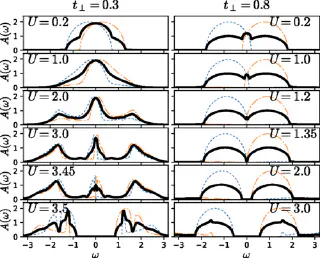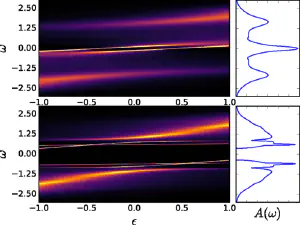
Multiple crossovers and coherent states in a Mott-Peierls insulator
We consider the dimer Hubbard model within dynamical mean-field theory to study the interplay and competition between Mott and Peierls physics. We describe the various metal-insulator transition lines of the phase diagram and the breakdown of the different solutions that occur along them. We focus on the specific issue of the debated Mott-Peierls insulator crossover and describe the systematic evolution of the electronic structure across the phase diagram. We found that at low intradimer hopping, the emerging local magnetic moments can unbind above a characteristic singlet temperature T\(^*\). Upon increasing the interdimer hopping, subtle changes occur in the electronic structure. Notably, we find Hubbard bands of a mix character with coherent and incoherent excitations. We argue that this state might be relevant for materials such as VO\(_2\) and its signatures may be observed in spectroscopic studies, and possibly through pump-probe experiments.
